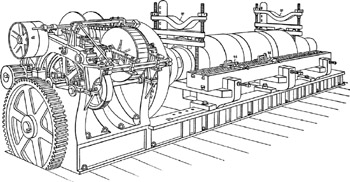The Flexibility of the Process Is a Semantic Property
Some processes are more flexible than others. That is, they can be changed more easily. There are specific semantic properties to the process and the way the process is configured that make it either flexible or rigid. We'll explore this distinction soon, but first let's return to the capital investment portion of our definition of a business process.
Formal Investment in the Process
Generally, there is an expectation that the capital investment will pay off by the repeated application of the process. The payoff may be in efficiency, quality, risk reduction, or control. The repeated application of the process comes from running similar transactions through the same process.
Capital Investment (Not the Accounting Definition)
Accountants have rules for capitalizing expenses. Per the rules and conventions, much of what is truly capital in nature does not get capitalized.
For our purposes, a capital investment in any process is a one-time investment that is expected to positively change some output variable (Figure 3.9).

Figure 3.9: Cutting with more (left) and less (right) capital investment.
To make capital investment clear, assume that your staff was carving wooden umbrella handles by hand. A capital improvement might be to introduce a spinning lathe (Figure 3.10). The lathe might be foot powered with a rest against which the worker could lean a cutting tool.

Figure 3.10: Lathe with some automation.
In this case, the investment in a lathe is a capital expense that is expected to improve the handle maker's productivity, as well as the consistency of the finished product.
| Note | Even at this level, it is the expectation of similar transactions (in our example the need for round handles) that inspires the capital investment. If all subsequent orders are for square handles, the investment in the lathe will be unrecovered. |
"Hard" or Rigid Automation
Let's take the lathe investment to its next level. Say you've noticed that most of your orders are coming in for a particular style of beveled handle. As a result, you commission a machinist to build a rig that cuts the particular shape automatically (Figure 3.11). All the worker has to do is put the block of wood on the shaft, turn the machine on, and take the handle off when it's finished.

Figure 3.11: Hard automation lathe.
This capital improvement makes one shape and it makes it very well, but it is not easily modified to make another shape.
Getting Back to the Business System
Business processes are similar to the cutting process being employed by the carver and the lathe. The capital investment runs the gamut from the time invested in setting up forms and procedures and training people, to out-of-pocket capital outlays for computers and software systems to automate part or all of a process.
Manual or Automated
It is not necessary that a process be automated to make it a business system. Before 1950 and the advent of computers, all business systems were manual business systems. Many parts of most businesses still rely on partially or completely manual systems. A recent Hurwitz study indicated that only 10% of all enterprises have fully integrated even their mission-critical business processes.[9]
Manual Does Not Mean Ad Hoc
Although a business system can be a manual process, it is not true that any process is a business system. Ad hoc processes are not business systems. Suppose you run a small retail business and one day you spill coffee on a customer. If you offer him $5 to cover his dry cleaning bill, you have executed an ad hoc process. There was no formal procedure to handle this event; however, you acted appropriately in the best interest of the customer. Although it was a good idea, it does not make it a business system because no capital investment has been made. If you decide to formalize such customer service behaviors, create procedures and tracking forms, and train your staff, you have created a business system.
Semantics Determine How Hard or Soft Process Automation Is
We develop this argument more fully later in this book, but for now, take it on faith:
The semantic precision is what determines what is rigid and what is flexible about business process automation. The more precision, the more rigidity.
Note that sometimes you need more precision, but it comes at a cost of increased rigidity.
Efficiency versus Flexibility
In general, just as in manufacturing, the less flexible system tends to be more efficient. But this is not always true. Much of this book is about how to have it both ways.
What Does It Mean for an Application to Be Semantically Aware?
It will probably be at least 10 to 20 years before applications are really semantically aware. By this I mean applications that could pass a variation on the Turing test and have a basis for "knowing" what they are doing.[10] At some point we will be able to program our systems with a finite number of basic concepts and allow the system to work out the meaning of new information from the clues at hand, much as a human does. In the meantime, we'll use the following definition:
| Semantically aware application | An application is semantically aware to the degree to which the application designer imbued the application with semantic precision and veracity. |
[9]"Hurwitz Group Study Finds Only 10% of Enterprises Have Fully Integrated Their Most Mission-Critical Business Processes," December 4, 2001. Available at http://www.hurwitz.com/press/pressrelease_ebpiresults.htm.
[10]Alan Turing, a pioneer in computer science, proposed a test for artificial intelligence whereby if a machine could fool a sufficient number of human interrogators often enough, it would be considered sentient.
EAN: 2147483647
Pages: 184